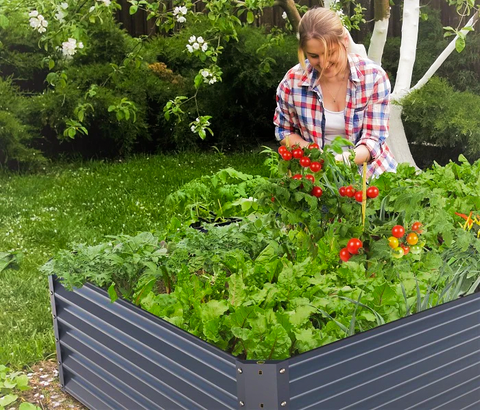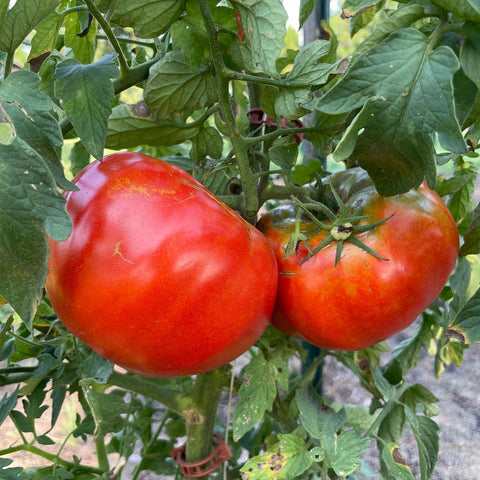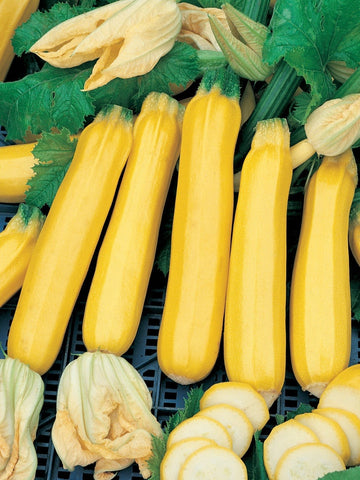Gardening is a delicate dance of balance and harmony, where each plant interacts with its surroundings to create a thriving ecosystem. Companion planting is a technique that harnesses the power of these interactions to maximize biodiversity, yield, and overall garden health. When combined with the elevated structures of raised beds, this technique reaches new heights of effectiveness. In this blog post, we will explore the concept of companion planting in raised beds and delve into how this strategy enhances biodiversity and yield. Our collection of innovative designs, high-quality materials, and eco-friendly Galvanized Raised Garden Beds are tailor-made to facilitate companion planting and create a flourishing garden that embraces nature's interconnectedness.The following content also has some reference value for raised garden beds.

Understanding Companion Planting
Companion planting involves strategically planting different species of plants in close proximity to one another to create mutually beneficial relationships. Some plants have the ability to deter pests, enhance soil fertility, or provide shade for others. By capitalizing on these natural interactions, gardeners can achieve healthier plants, improved pest management, and increased yields.
In raised beds, companion planting takes on a new level of significance due to the controlled environment and enhanced microclimate they provide. The elevated structure of raised beds allows for more efficient planning and organization of companion plant combinations.
The Role of Biodiversity in Raised Beds
Biodiversity, or the variety of plant species in a garden, is a critical factor in ecosystem health. A diverse garden is better equipped to resist diseases, pests, and environmental stressors. Companion planting in raised beds encourages biodiversity by fostering a mix of plants that support and complement each other's growth.
By incorporating a variety of plant species in your Galvanized Raised Garden Beds, you create a rich tapestry of vegetation that attracts beneficial insects, encourages pollination, and deters harmful pests. This dynamic interplay of different plants creates a resilient ecosystem where each species contributes to the overall health of the garden.
Enhanced Soil Health through Companion Planting
The science of companion planting extends to soil health as well. Certain plants have the ability to improve soil structure, nutrient availability, and microbial activity. When strategically placed in raised beds, these plants can significantly enhance the soil ecosystem.
For example, legumes like peas and beans have nitrogen-fixing capabilities. They form symbiotic relationships with beneficial bacteria that convert atmospheric nitrogen into a form that plants can use. When planted alongside nitrogen-hungry crops, legumes enrich the soil with this essential nutrient. The raised bed environment of Galvanized Raised Garden Beds allows for easier integration of these companion plant combinations, leading to improved soil health and higher yields.
Natural Pest Control with Companion Planting
One of the most significant advantages of companion planting is natural pest control. Certain plants emit compounds that deter or repel specific pests, creating a protective shield for neighboring plants. This phenomenon is known as allelopathy.
For instance, marigolds are renowned for their ability to repel nematodes and other soil-borne pests. By planting marigolds around susceptible crops like tomatoes or peppers in raised beds, you create a barrier that helps protect your main crops from destructive pests. The confined space of raised beds makes it easier to implement these protective companion plant pairings, reducing the need for chemical interventions.
Space Optimization with Companion Planting

Companion planting also plays a role in optimizing space within raised beds. The compact design of these beds allows for efficient utilization of space by intermixing plants with different growth habits and requirements.
For example, tall plants like corn or trellised cucumbers can provide shade for shorter, heat-sensitive plants like lettuce or spinach. This shading effect not only helps protect delicate plants from the scorching sun but also reduces soil evaporation, conserving water. The vertical space in raised beds can be maximized by using trellises and supports, creating additional layers for companion plant combinations that enhance each other's growth.
Combining Aesthetics with Functionality
Companion planting is not only about functionality; it's also an opportunity to combine aesthetics with practicality. Raised beds allow you to create visually appealing arrangements that are as beautiful as they are beneficial.
Imagine a raised bed adorned with a vibrant mix of flowering plants like calendulas, nasturtiums, and zinnias, interspersed with vegetables and herbs. This aesthetic harmony not only enhances the visual appeal of your garden but also attracts pollinators and beneficial insects that contribute to the health of your entire garden ecosystem.
Companion Plant Combinations for Raised Beds
Here are some tried-and-true companion plant combinations that work especially well in raised beds:
- Tomatoes and Basil: Tomatoes are known to benefit from the natural pest-repellent properties of basil. Planting basil around your tomato plants can help deter pests while enhancing the flavor of your tomatoes.
- Carrots and Onions: Carrots and onions make great companions. Onions help deter carrot flies, while carrots provide a natural barrier against onion pests.
- Lettuce and Radishes: Fast-growing radishes can help break up the soil for lettuce, allowing it to grow more easily. Plus, radishes can deter pests that commonly affect lettuce.
- Beans and Corn: Beans naturally fix nitrogen in the soil, benefiting the nitrogen-loving corn plants. In return, corn stalks provide a natural trellis for climbing bean plants.
- Cucumbers and Sunflowers: Sunflowers can provide shade to cucumber plants, helping to keep the soil cooler and preventing the cucumbers from becoming bitter due to excessive heat.
- Marigolds and Most Vegetables: Marigolds are known for their pest-repellent properties. Planting them throughout your raised beds can help deter a wide range of garden pests while adding a pop of color.
- Peppers and Spinach: Spinach's low, leafy growth provides shade and protection for pepper plants, which tend to prefer a slightly cooler environment.
- Herbs and Most Vegetables: Herbs like thyme, oregano, and rosemary have strong aromas that can help repel pests. Planting them alongside other vegetables can provide a natural defense against common garden insects.
Implementing Companion Planting in Raised Beds
To successfully implement companion planting in your Galvanized Raised Garden Beds, consider these tips:

- Plan Ahead: Research companion plant combinations and plan your raised bed layout accordingly. Take into account the growth habits and space requirements of each plant.
- Complementary Growth Rates: Choose companion plants with similar growth rates to avoid one plant overtaking another. This is particularly important in the confined space of raised beds.
- Spacing: While raised beds allow for closer planting, ensure that companion plants have enough space to grow and receive adequate sunlight.
- Rotate Crops: Practice crop rotation within your raised beds to prevent soil-borne diseases from building up. Companion planting can complement crop rotation strategies.
- Trial and Observation: Gardening is a dynamic process. Keep track of how different companion plant combinations work in your specific raised beds, and adjust your approach based on your observations.
Conclusion
Companion planting in raised beds is a powerful technique that offers a multitude of benefits, from enhanced biodiversity to increased yield and healthier plants. The innovative designs, high-quality materials, and eco-friendly attributes of Galvanized Raised Garden Beds available on our website provide an excellent foundation for implementing companion planting strategies.
By harnessing the science of plant interactions and the advantages of raised beds, you can create a thriving garden ecosystem that not only produces abundant crops but also promotes natural pest control and nutrient cycling. As you explore the world of companion planting, let your Galvanized Raised Garden Beds become a canvas for creativity and biodiversity, yielding a garden that flourishes in harmony with the rhythms of nature.









